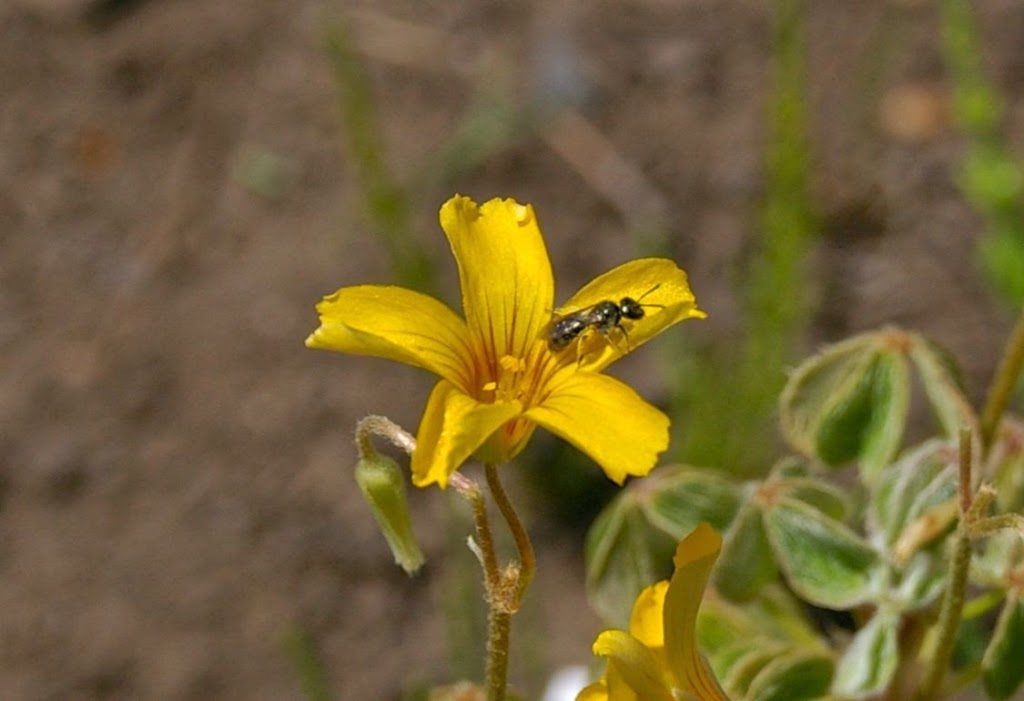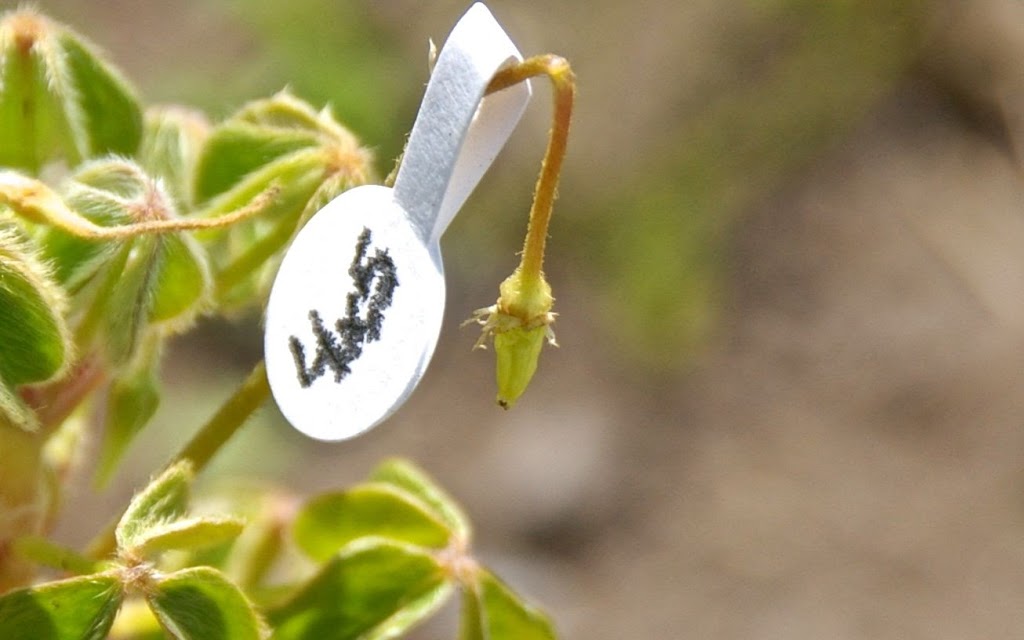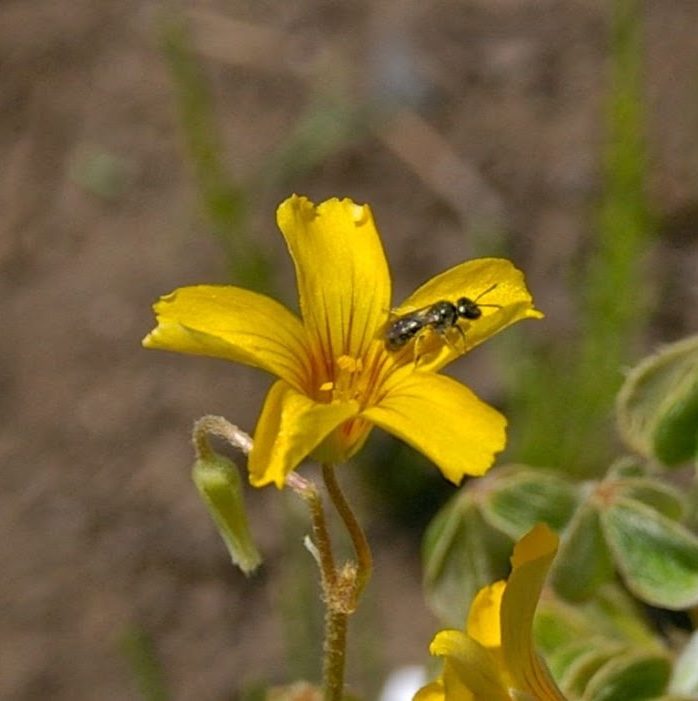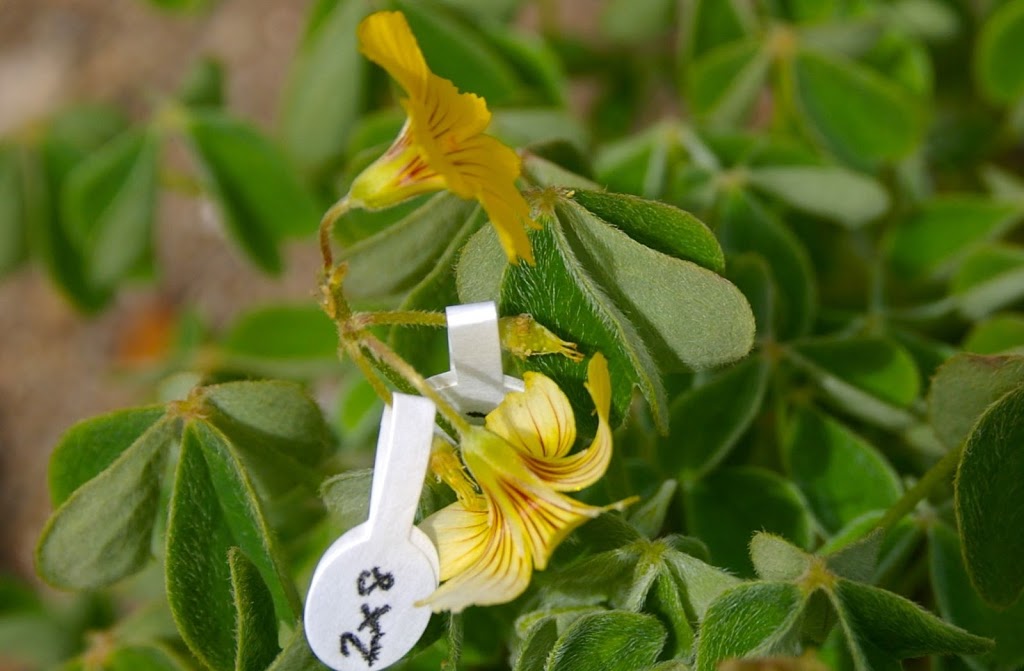bees, Blog, oca (Oxalis tuberosa), pollinators
Oca: Of pods and pollinators
 |
| Panurginus spp. bee on oca flower |
This bee is small enough to crawl all the way down into an oca flower to access the lowest tier of styles or stamens, which I have observed a number of times. That makes it a very valuable bee, since it is difficult for this clumsy human to access those parts without damaging the flower. As you can see in the picture (if you enlarge it), this bee’s legs are covered in oca pollen from crawling around in the tight quarters of the oca flower. Now, if I only had about a thousand more of them, I might never need to attempt another manual pollination. You can bet that I’ll be studying up on Panurginus spp. to find out if I can do anything to increase their population.
As for this bumbling wanna-bee, I seem to have managed a few successful pollinations, although not as many as I would like. As you can see from the following pictures, these denuded oca flowers seem to have gone through considerable enlargement of the ovary, which I interpret as a sign of imminent seed development. It looks like I may have produced 5-10 of these over the course of 100 pollinations, which is kind of depressing, but if I get just one pod to mature seeds, I’m sure that I will be reenergized and back out pulling flowers apart every morning. As I understand it, I would be doing very well to get three seeds per pod. I have space to grow 1000 oca plants next year if I had the seeds, which would be a pretty good size for an amateur breeding program. That would require 334 mature pods, which, at my current rate of success, would necessitate 3,340 hand pollinations. Of course, not all the seeds are likely to germinate, so double that. So, let’s just make it a nice, round 7,000 pollinations to go.
 |
| Maturing oca pod (I hope) |
Oca seeds and tubers are sometimes available in our seed shop.


